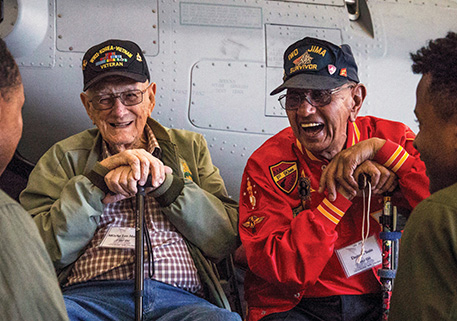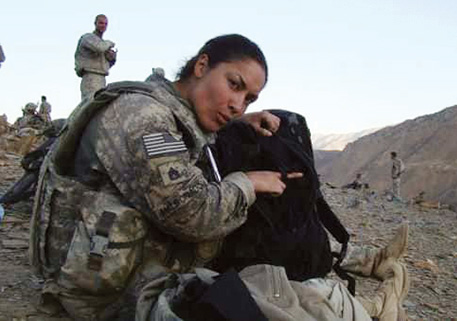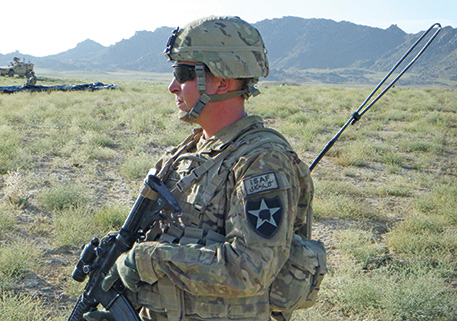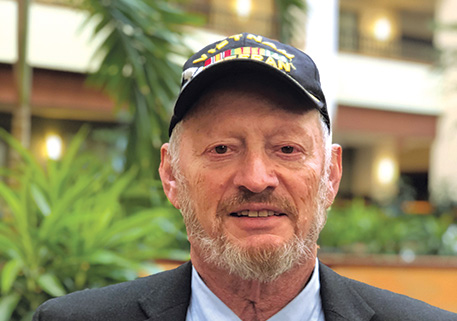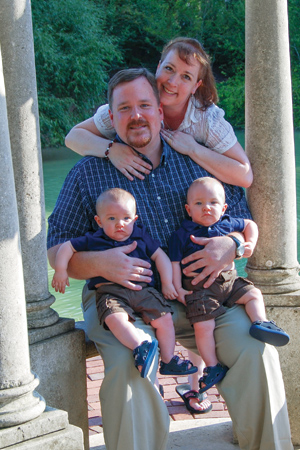
DAV helps Army veteran leave lasting legacy for family after burn pit cancer battle
Seven-year-old Cole McNorrill wore his mother’s dog tags and Army uniform to career day at his school in Aiken, S.C. He wants to be a soldier like his mom when he grows up.
But his mother—Ashley McNorrill—will never have the chance to see that dream come true for her little boy. She succumbed to cancer in 2016.
Ashley and husband David had married in 2008. Not long after, they looked to expand their family, but Ashley found herself experiencing unexplained pain and fertility problems.
“Around the summer of 2011, I was beginning to have really severe pains in my belly and on my right side under my rib cage,” Ashley said, in an interview before her death. “The pain was so severe I’d curl up in the fetal position while in a hot bath because the pain medicine was not helping at all.”
The cause was initially thought to be endometriosis, a relatively common health condition among women that causes uterine tissue to grow outside the uterus. Doctors recommended Ashley undergo a hysterectomy. The McNorrills then pursued adoption as a path to parenthood, and on Dec. 2, 2011, they welcomed their new sons to the world—twin boys, Cole and Fletcher.
“After we brought the boys home, she admitted the cramping was getting really bad,” said David. “So we decided she should get the hysterectomy. I told her, ‘Let’s get that done so you can raise these boys.’”
In February 2012—when the twins were only 2 months old—Ashley went in for a hysterectomy. During the procedure, doctors found evidence of cancer.
“We didn’t know exactly what kind it was,” said David. “Appendix cancer doesn’t spread like other cancers; it peppers the inside of your belly. So we didn’t know if it was uterine, ovarian or what.”
Ashley was ultimately diagnosed with stage 4 appendiceal cancer, a rare form of the disease occurring in only one or two cases out of 1 million. She joined a support group online, and there she met a Marine Corps veteran who suggested she talk to someone about her exposure to burn pits in Iraq to see if her cancer was service connected.
An Army JAG officer, Ashley deployed to Iraq in January 2005 and was assigned to Camp Victory, in Baghdad.
“There was a burn pit just a few feet across from the [dining facility], and I remember that oftentimes, while [I was] waiting in line, someone would be manning the burn pit for hours, burning whatever it was they were burning,” said Ashley.
In 2014, the McNorrills met with National Service Officer Bryan Kerouac to find out what options were available. It had been two years since Ashley had become ill, and her condition was worsening. With medical bills adding up and their young children requiring care, the family was struggling financially.
“She knew from the very first day we met, she was terminal,” said Kerouac. “With two small children and her husband, she knew it. She was driven to do everything she could to make sure that something—some sort of legacy of hers—was left behind.”
Kerouac proceeded to piece together Ashley’s service claim, pulling together evidence from her deployment to Camp Victory—showing that it was known to have a large burn pit—and helping Ashley educate her doctors on what types of toxins she had been exposed to and how those had led to her diagnosis.
For decades, burn pits were used overseas to dispose of almost all forms of waste on or near American expeditionary bases. They were used extensively, with more than 250 in operation in Afghanistan and Iraq alone. While lawmakers banned military use of burn pits in 2010—except in areas where other options were infeasible—the Department of Veterans Affairs estimates 3.7 million veterans and service members have been exposed to the toxic fumes from burn pits, so far.
“They burn everything—food products, wood, paint, chemicals, human and animal feces, human and animal carcasses, unexploded ordnance—so a lot of toxic chemicals are emitted in the air,” said Deputy National Legislative Director for Benefits Shane Liermann.
While the VA acknowledges the risks involved with the exposure to burn pits, they do not currently provide presumption of service connection for any diseases related to exposure. Many veterans who were made ill because of the exposure struggle to provide evidence that links their illnesses to their service.
“First, they have to know about it,” said Kerouac. “In Ashley’s case, a fellow veteran brought the possibility to her attention; otherwise, she may have never come to me. Then, they’ve got to research, gather all this evidence, formulate a medical rationale and opinion, present that to a doctor, and have that doctor then write the opinion and hopefully it’s the one the veteran needs.”
DAV brought the hazards of burn pits to light as far back as 2007 and is now helping craft legislation that would grant concession of exposure for veterans who served in locations known to have used burn pits, making it easier to establish service connection today and presumptive diseases in the future.
“By granting concession of exposure, veterans already have one box checked in the claims process, and it allows them to focus on proving their specific illness is connected to burn pits,” said Liermann.
For veterans like Ashley, that means spending less time battling the VA and more time focusing on making lasting memories with loved ones. According to David, he and Ashley were lucky to have had the help that they did, ultimately receiving her permanent and total VA disability rating before it was too late.
Ashley died March 30, 2016, at 46 years old.
“It’s incredibly sad to think of a fairly young woman with a significant future ahead of her and young family to raise being gone so soon,” said Washington Headquarters Executive Director Randy Reese. “Sadly, Ashley is one of an estimated 3.7 million veterans who’ve been exposed to open-air burn pits when the potential health consequences were known. It likely will be years before we fully understand the cost veterans and their families will endure, but that won’t stop our pursuit of justice for them.”
“One of her biggest concerns was she wanted to make sure the boys were taken care of,” David said. “They’ll have their tuition paid for college for one thing, [plus additional] state benefits. For her to know that they would be taken care of was tremendous.”
“I’ll never be whole again,” said Ashley before she died. “But it comforts me to know that my boys will be taken care of even after I’m gone.”

